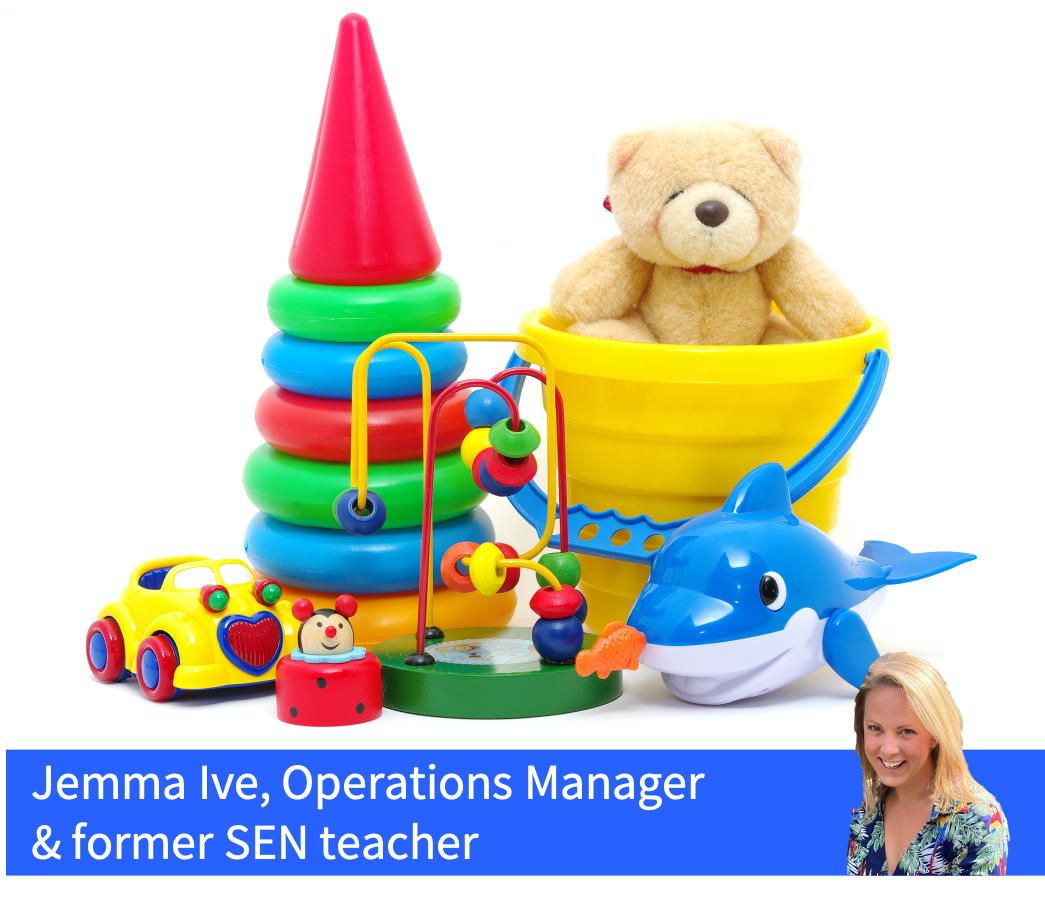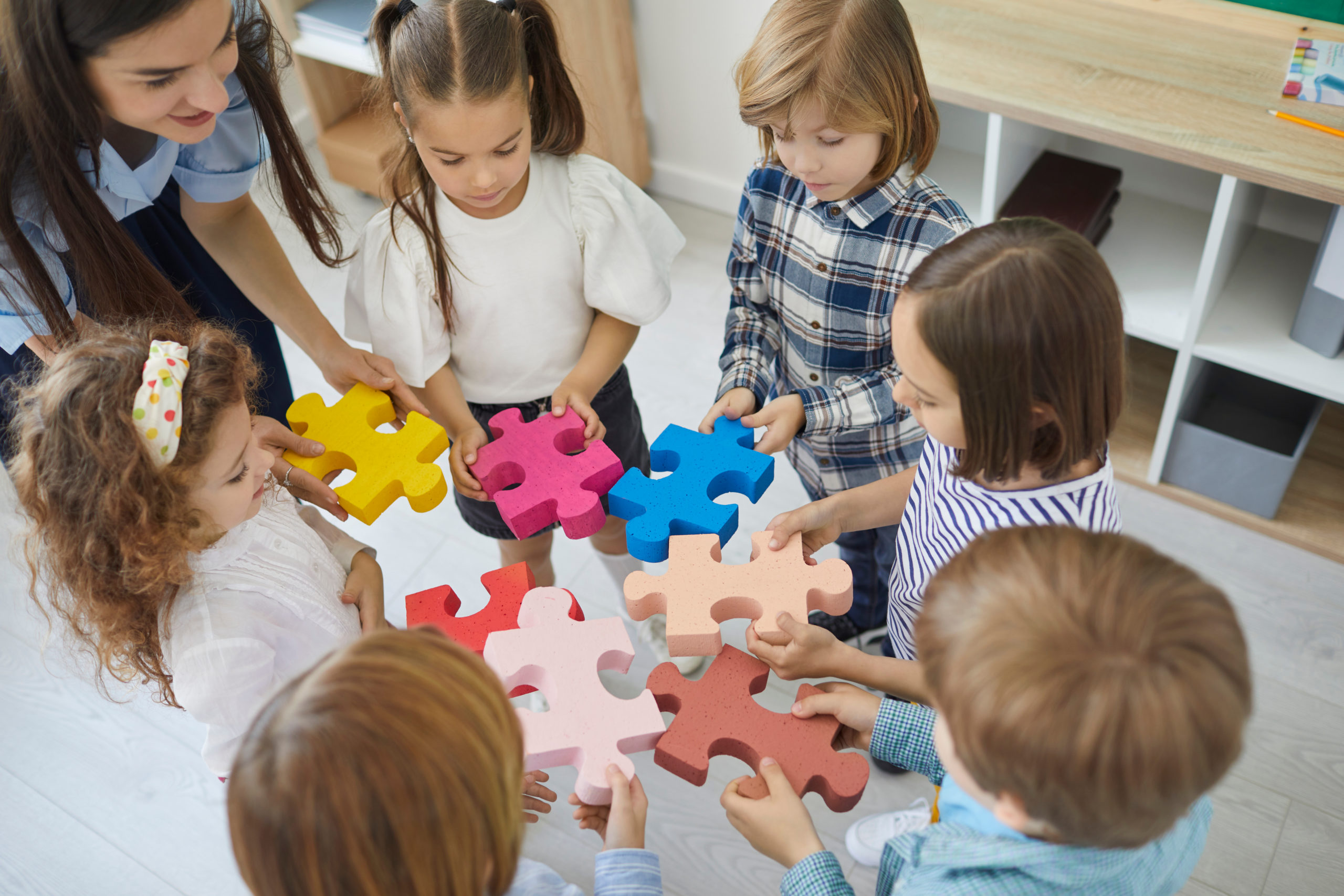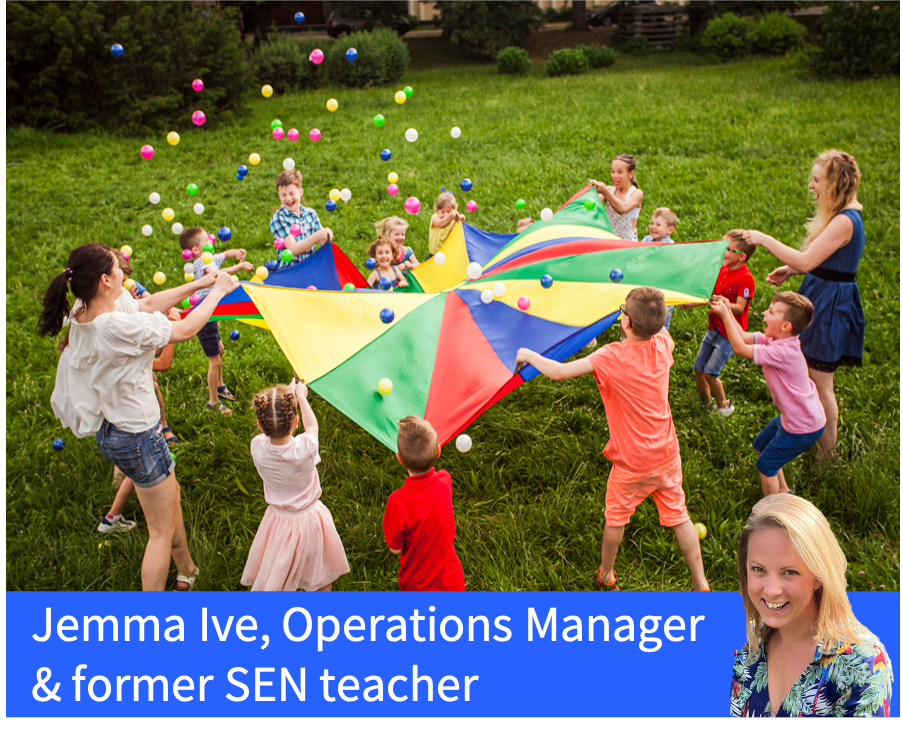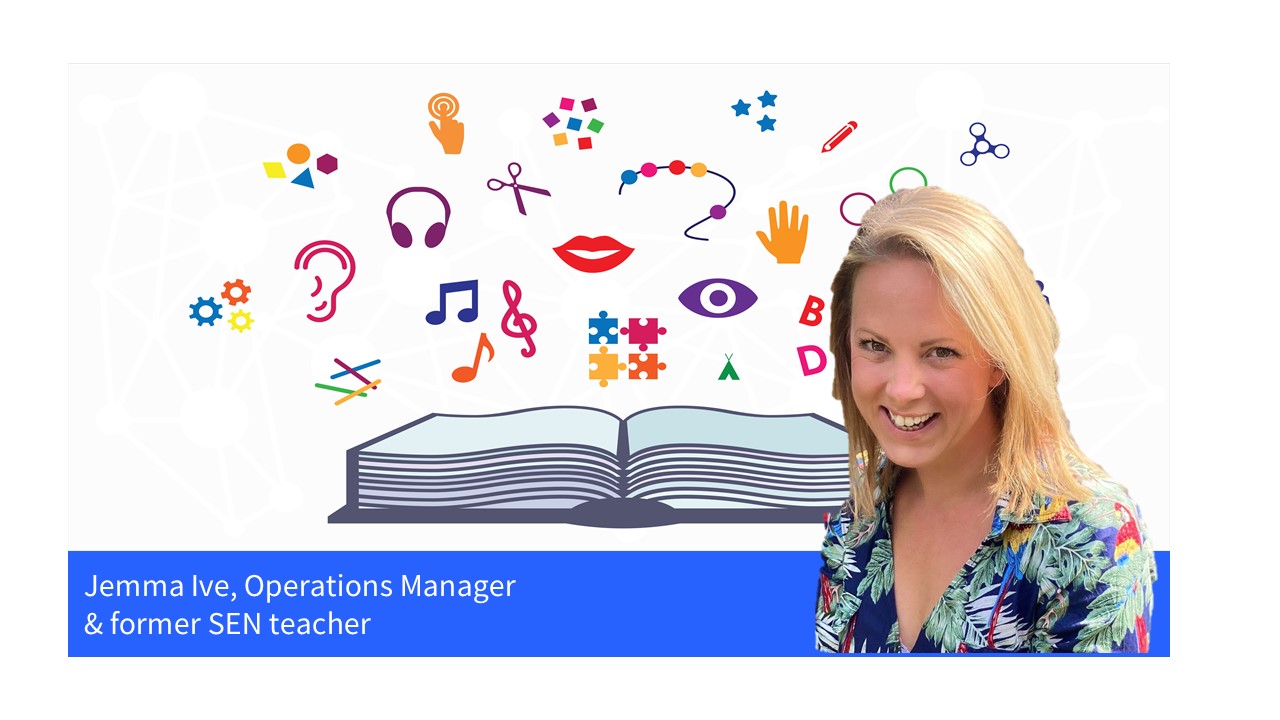In the third part of our seven part series we take a look at Attention Autism and explore some motivating, Gina Davis inspired little group activities that can be tailored for all age groups. Take a look at our other blogs on PECs – The six steps and how to make it fun and SCERTS approach made easy! for more great SEN teaching ideas, tips and best practice!
All you need to offer a child an irresistible invitation to learn is a bucket and some motivating items – get inventive! Light up toys, noisy toys, balloons, foam… the sky is the limit!
Stage 1 – Focus – the bucket
In this stage we teach a child how to focus their attention. Use your voice and facial expressions to build excitement about the bucket, sign a song ‘what is in my bucket today, bucket today’ You have to make that bucket the most interesting thing in the room. Keep it short, snappy and fun — this stage is not about sustained attention, all we are looking for here is interest and the student wanting to have a turn.
Stage 2 – Sustain – the attention builder
This is where we can bring in a fab activity that the student will want to watch from start to finish that lasts a little bit longer. In this stage we can use 100’s of different activities to really plant ideas, rehearse and embed them as skills for the child. We are looking to engage the student for longer periods of time but with lots of lateral progression.
Stage 3 – Shift – the interactive game
We use all the language of turn taking but it is possible, especially for a child with Autism Spectrum Disorder (ASD), to learn a skill without ever understanding the social side of it. So in this stage the child watches an activity, and takes their turn — shifting their attention to their own participation, then back to the group.
Stage 4 – 1, 2 & 3 and transitions– the table top activities
The student will watch the demonstration as part of a group, collect the items needed to do the activity themselves and then transition to an area to do the activity themselves.
Now here are some irresistible Attention Autism ideas for you!
Foam flower pots.
What you will need:
- Small flower pots – each student will need two
- Shaving foam – Peppa Pig have a great one
- Spray bottle
- Food colouring to spray onto the foam
What you need to do:
- With one flower pot upside down spray on loads of foam. Use language like “ready, steady, go!” leaving a pause for the children to respond.
- Spray with desired colour. This is a great time to engage the students — ask them to pick a colour, and use symbols for those that are not yet using verbal language.
- Get your other flower pot ready to quickly put over the foam. “Ready, steady……. goooooo!”. The foam flies out of the holes in the top pot – this was always a firm favourite with my class.
Bubble elephants
What you will need:
- Yogurt pots
- Straws
- J-cloth
- Rubber bands
- A small dish or tray for each child that can be dipped in the yogurt pot
- Bubble mixture
- Food colouring and paper if you are wanting to extend the activity
To set this up you will need to poke a small hole into the side of the yogurt pot just big enough for the straw to go through. Cut the J-cloth into squares that are big enough to cover the opening of the pot and secure with a rubber band.
What you need to do:
- Dunk the end of the pot that is covered in the cloth into the bubble solution.
- Blow into the straw and a trunk of bubbles with start to form.
- The more you blow the longer the trunk! When demonstrating you can stand up and let the students touch the bubbles.
- Key words can be used all the way through this, for example ‘blow’, ‘more’ and ‘go’ to really reinforce that language
- If you wish to extend the activity you can add food colouring to the bubble mix and have paper on the table. As the students blow the coloured bubbles will pop leaving colourful marks on the paper – this is a great way to learn colours too.
Flour
What you will need:
- Flour
- Sieve
- Numbers/letter
- A small pot
What you need to do:
There are a few ways you can do this. I would suggest picking one and then expanding it if the class is able to do so.
- Tightly pack the pot with flour
- Quickly turn over and gently remove the pot to reveal a flour castle.
- Repeat two more times (as many as you like, but 3 is a good place to start) counting as you go so you end up with 3 flour castles – Ensure you leave space in-between each castle.
- Now it’s time to really build the anticipation… “Ready, Steady, Go!” and flatten the first castle. The flour will explode everywhere.
- Repeat with the other flour castles.
- Remember this is great way to bring in new words like ‘again’, ‘more’, ‘go’ and ‘squash’ and some great counting skills too.
- With this equipment you can also sieve the flour over numbers, letters and shapes, then removing them leaving the outline. My class used to love doing their hands.
Volcano
What you will need:
- Fizzy drinks in plastic bottles, you can get the mini bottles- I used to use coke
- Mento sweets
- Aprons
What you need to do:
This one is super simple. All you have to do here is take off the lid of the fizzy drink, and drop in a mento and watch what happens. Although this is so simple and sounds like it takes no time at all there are lots of opportunities to explore new language and skills. Words and actions like ‘turn’, ‘open’, ‘drop’, ‘foam’, and ‘explode’ may be words and actions that are not used everyday. If your class is learning about science and are at a level that they can understand then this is a great science experiment. You can even bring in different temperature bottles. Again, more than anything else this fun and the students can feel and taste everything!
Exploding pots
What you will need:
- Film pots with lids — difficult to come by these days but any small pot with a tight lid will do
- Alka-Seltzers
- Cold water
- Luke warm water
- Hot water (not too hot!)
What you need to do:
This is a great science experiment and perfect for those advanced classes but also just fun for all.
- Fill each of the pots with the different temperature water
- Add an Alka-Seltzer
- Pop on the lid as quickly as possible
- Turn each pot upside down
- Then wait… the pots will go “Pop, Pop, Pop!” all at different times
Musical shakers
What you will need:
- Transparent bottles with lids
- Lots of different arts and craft materials, e.g. beads, bells, crate paper, pipe cleaners, glitter
- Sellotape
What you need to do:
Let the students get creative here. They can add whatever they like to their bottle! Let them feel the materials and discuss with them how they feel – this is a great way to introduce new language.
Once the bottle is full, just sellotape the top and let the student shake their bottles. I used to go straight into a music session after this activity so we could really put the bottles to use.
Playdough
What you will need:
- Playdough (several different colours)
- A large foam dice
- PECs/symbols for the actions. E.g. roll, squash, cut, pull, poke etc
- Cutter
- Rolling pin
What you need to do:
Add the symbols to the foam dice, one on each side. In this session you can allow each student to take a turn to roll the dice to decide what happens with the playdough. Whatever the dice lands on, model that action using lots of single words. You can bring in shapes or anything else you like here.
These are just some tried and tested ideas that can be easily adapted to suit your students’ particular needs. I have found them to be great ways to cover many EYFS and curriculum areas.
You can find even more Attention Autism idea on the Gina Davis page here.
All in all, my top tips for success are have fun and be guided by your students — they will certainly let you know if it is working!




